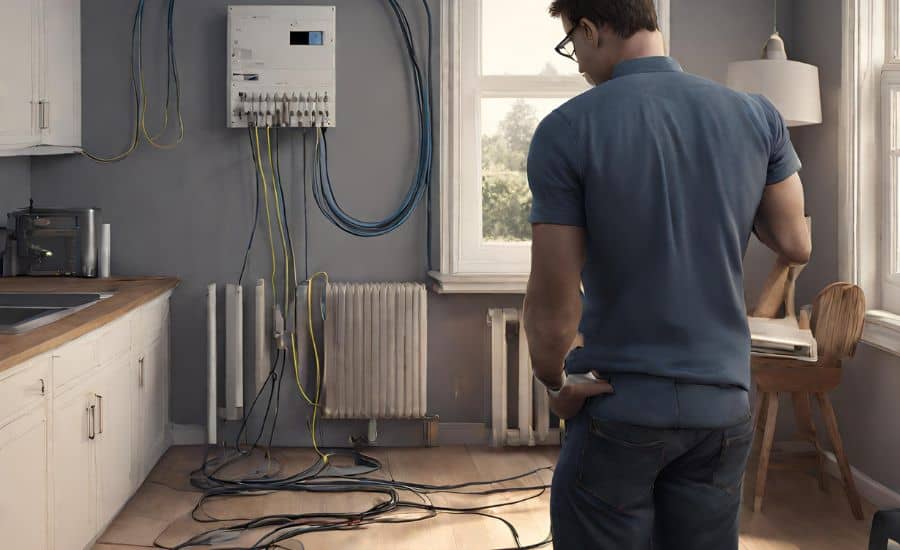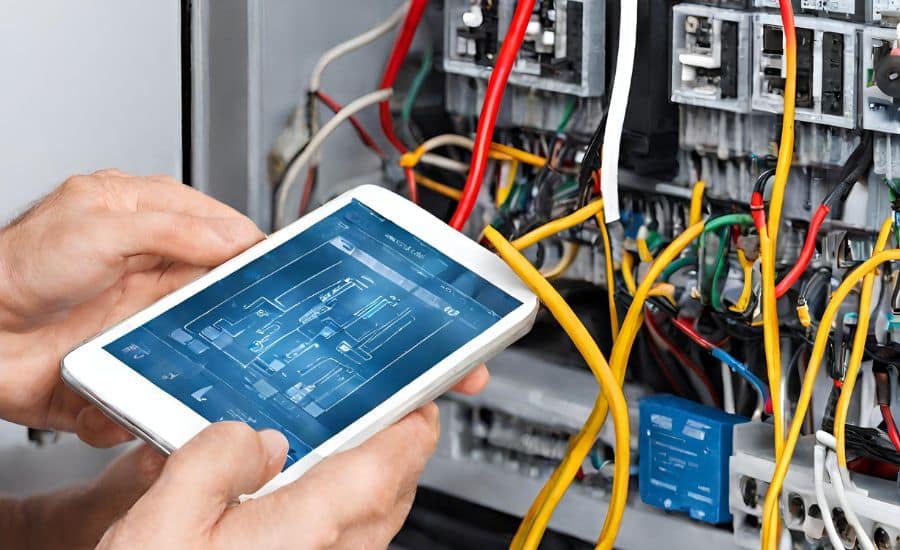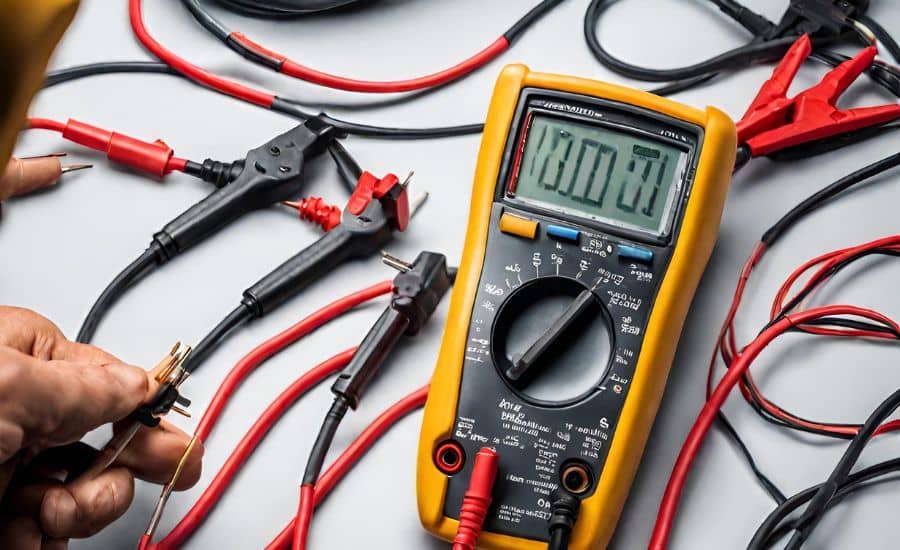How To Check Electrical Wiring In Your Home
Your home’s electrical wiring is a complex system. Understanding the state of your home’s electrical wiring is crucial for safety and preventing potential hazards.
Your home’s wiring plays a vital role in keeping everything running smoothly. Routinely checking it can avoid potential hazards, including fires and electrical malfunctions.
In this blog post, we’ll show you how to check the electrical wiring in your home. We’ll also discuss some common wiring problems you should look for and how to prevent them.

Why Regular Electrical Inspection is Important
According to the National Fire Protection Association (NFPA), electrical fires accounted for 51,000 home fires in 2021, causing 500 fatalities and 1,400 injuries. This underscores the importance of regular electrical safety inspections.
Defective wiring plays a significant role in many incidents, making routine checks crucial to prevent potential hazards. Regular reviews ensure your electrical system remains in good working condition, minimizing the risk of electrical fires and shocks.
What Are the Common Wiring Problems in a House?
Various signs can indicate faulty wiring. Flickering lights, burning smells, or mild electric shocks when using appliances are warning signs. If your circuit breaker trips frequently or you notice visible rodent damage, it might indicate issues with your wiring. Older homes might have outdated wiring, such as aluminum, which can pose additional risks.
Continual inspection is essential to identify and fix these issues. If you notice any of these signs, you should call an electrician to investigate thoroughly. A qualified electrician will be able to find the root of the issue and recommend necessary electrical repairs.
How To Check Electrical Wiring In Your Home?
 #1- Turn Off Power
#1- Turn Off Power
Alright, before diving into any inspection, safety comes first! It’s crucial to switch off the power to the area you’re examining. This step protects against unexpected shocks and ensures you can work in a secure environment.
#2- Visual Inspection
It’s time for a detective’s eye! Start by visually inspecting the visible wiring, outlets, switches, and the circuit breaker panel. Look for any telltale signs of trouble, like frayed wires, burn marks, or rodent damage. These are all indicators that something might be off.
#3- Check Outlets and Switches
Let’s investigate the usual suspects – outlets and switches. Loose connections, flickering lights, or visible damage can signal Damaged wiring. These issues should be checked and resolved promptly.
#4- Use a Circuit Tester
Here comes your sidekick, the circuit tester! It’s a handy tool to make sure that your outlets and switches are getting the right voltage and are properly grounded. This little gadget helps you confirm things are running as they should.
#5- Look for Rodent Damage
Pests can be more than just a bother; they might also mess with your wiring! Check for any signs of rodent damage, as chewed wires could spell trouble.
#6- Check Circuit Breaker Panel
The control center of your electrical system, the circuit breaker panel, needs a good look. Tripping issues or any signs of distress could indicate problems within the electrical system.
#7- Ground Fault Circuit Interrupters (GFCIs) and AFCIs
These superheroes protect us from electrical dangers. Ensure your Ground Fault Circuit Interrupters (GFCIs) and Arc Fault Circuit Interrupters (AFCIs) do their jobs. Test them to ensure they’re working as intended.
#8- Check Extension Cords and Power Strips
These guys are hard workers but can sometimes bear the brunt of wear and tear. Inspect them for any signs of damage; frayed cords or exposed wires can be risky.
#9- Examine Outdoor Wiring
Outdoor wiring faces the elements, so make sure they’re weatherproof and free from damage. Exposure can lead to electrical hazards.
#10- Consult a Professional
If things seem fishy or you need clarification on the condition of the wiring, it’s wise to reach out to an electrician or electrical contractor. They’re the experts and can guide you in the right direction.
How to Test House Wiring with a Multimeter?

Using a multimeter is like having X-ray vision for your home’s electrical system. Please set it to the right voltage range and test your wiring. But here’s the crucial bit: ensure you’ve turned off the power before probing the wires to avoid shocks. The multimeter helps you see if the electrical flow is smooth and safe.
How Much Does It Cost to Have an Electrician Check Wiring?
So, what’s the cost of peace of mind? Having an electrician check your wiring might set you back around $125 to $200, but this can vary based on the size of your property, the complexity of the electrical system, and any repairs needed. Remember, this expense is a worthwhile investment in your home’s safety.
How to Prevent Faulty Wiring System
Prevention is better than cure. Here are a few tips to keep your wiring in tip-top shape:
- Check all electrical outlets and switches for any signs of damage or wear.
- Inspect all electrical cords for any visible damage.
- Ensure that all cables are correctly plugged into outlets.
- Test ground fault circuit interrupters (GFCIs) and arc fault circuit interrupters (AFCIs).
- Inspect light fixtures and ceiling fans for any indications of damage.
- Confirm that light bulbs match the recommended wattage for each fixture.
- Test and ensure the functionality of smoke detectors and carbon monoxide detectors.
- Examine electrical panels for any signs of damage or issues.
- Verify that circuit breakers are accurately labeled.
- Avoid overloading circuits by connecting multiple appliances or electronics simultaneously.
- Avoid using extension cords or power strips to operate large appliances.
- Keep electrical devices away from water sources.
- Do not interfere with Power wiring or fixtures.
- If you detect the smell of burning wires or see sparks, immediately turn off the power to the affected circuit.
- Schedule a qualified electrician to inspect your electrical wiring every three to five years.
Bottom Line
Ensuring the safety of your home’s electrical system is paramount. Faulty wiring can lead to hazardous situations, including fires and electric shocks.
Regular inspections, proper maintenance, and immediate action upon noticing warning signs are key to preventing potential dangers. Feel free to seek professional help when needed.
By following these steps and being vigilant, you contribute significantly to the safety of your household.
If you are looking for professional electrical services, contact Total Power Energy at (206) 601-9948. We provide expert electrical installation, repair, lighting services, and thorough electrical safety inspections in Seattle, WA, and nearby areas. Schedule an appointment today and experience our exceptional services.
Frequently Asked Questions
How does a Professional electrician check for faulty wiring?
Electricians use various tools such as multimeters and visual inspections to identify issues like frayed wires, loose connections, or signs of damage in wiring.
How do I know if my house wiring is safe?
Signs of safe house wiring include no flickering lights, no burning smells, no tripping circuit breakers, and no visible signs of damage.
What are the signs of an electrical problem in your home circuit?
Common signs of electrical problems include flickering lights, burning smells, frequent tripping of circuit breakers, and appliances not working correctly.
How do you test for faulty electrical wires?
Using a multimeter, you can test the flow of electricity through the wires to identify any irregularities.
Can I do my own home electrical wiring?
For safety reasons, it’s advisable to leave home electrical wiring to professionals. DIY electrical work can be dangerous and may not comply with electrical codes.

